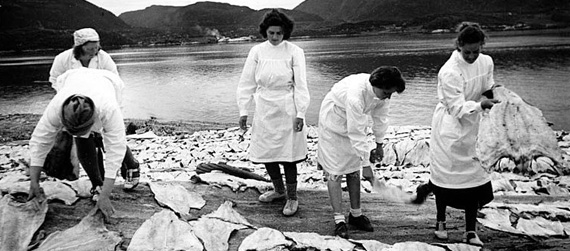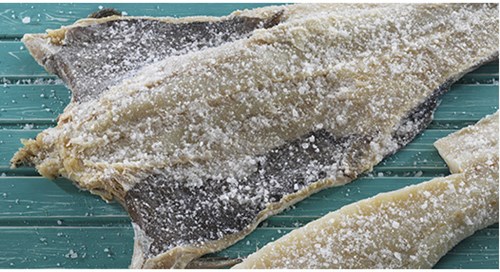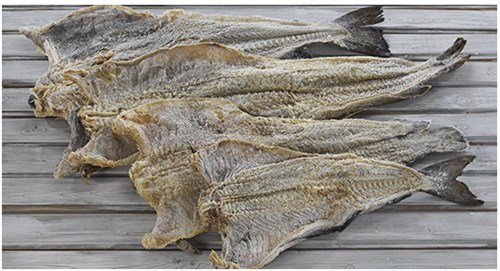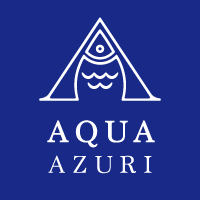Clipfish
ノルウェー語: Klippfisk
Norwegian: Klippfisk
ノルウェーは海で成り立つ国で、私たちが用いる方法は代々伝承されてきたものです。
塩漬けされ、乾燥されたタラでクリップフィッシュと呼ばれるものは、歴史的遺産の一つです。
魚を保存するために乾燥させることは、バイキングの時代からの伝統ですが、魚を塩漬けするのは、イベリア人漁師が、ニューファンドランドとの間を航海した15世紀にはじまりました。
塩漬け保存されたタラは、長い航海に耐えることができました。
クリップフィッシュは、中世期にまで遡る伝統のために、カトリック教国でもよく食べられています。
ローマ法王が、受難期に肉の代わりに魚を食べるように命令を下したのです。
そのために、ノルウェー人は長期にわたり、世界各地のカトリック教国にクリップフィッシュを輸出してきました。
この幸運は、ノルウェーが、塩漬けや、干しダラの世界最大の輸出国となった一つの理由なのです。
Norway is a nation built on the sea and our methods have been passed down through generations.
Clipfish – cod that has been both salted and dried – is an example of this heritage.
The tradition of drying fish to preserve it dates all the way back to Viking times, but the process of salting fish began in the 15th century, when the Iberian fishermen were sailing to and from Newfoundland.
Cod that had been preserved in salt would last the length of the journey.
Clipfish is also popular in Catholic countries, thanks to a tradition that dates back to the Middle Ages.
The Pope ordered Catholics to eat fish instead of meat during Lent, so Norwegians have exported clipfish to Catholics around the world for many years.
This blessing is just one of the reasons why Norway has become the largest supplier of salted and dried cod in the world.
塩漬けと乾燥
Salted and Dried

多くの太古から伝わる保存方法がそうであるように、クリップフィッシュの作り方はいたって簡単です。
「クリップフィッシュ」は名の通り「岩魚」で、岸部の岩の上にタラを放置して乾燥させる伝統的な保存方法です。
現在では、主として室内で近代的な技法を使用した乾燥させます。
クリップフィッシュは、その多用途性、歯ごたえと独特な味わいにより、世界各地のシェフから重宝されています。
As with most ancient methods of curing, creating clipfish is a simple process.
‘clipfisk’ literally means ‘rockfish’, a name derived from the traditional process of leaving the cod to dry out on flat rocks by the seaside.
Today it is mainly dried indoors using modern techniques.
Clipfish is appreciated by chefs the world over because of its versatility, wonderful texture and distinctive taste.

ステップ1:塩漬けStep one: Salting
魚を塩漬けにするには、乾燥塩漬けや、ブリンギング(bringing塩水漬け)またはピッケル漬けと、いくつかの方法があります。
ノルウェーでは、魚をピッケル漬けにする傾向にあります。
これは、容器から液が溢れ出すことなく、逆に魚を覆い、保護するからです。
マーケットの嗜好にもよりますが、通常、クリップフィッシュは、独特な味わいを持たせるために、10~20日間塩漬け熟成されます。
ノルウェー人は魚1キロに対し0.5~1キロの塩を使い、海塩を使うことを好みます。
There are a few different ways that fish can be salted – dry salting, brining or pickling.
Here in Norway, we tend to pickle our fish so that the water doesn’t run out of the container but is instead used to cover the fish.
Depending on the preference of the market, clipfish is usually salted and matured for 10-20 days to create its unique flavour.
Norwegians typically use 0.5-1 kilos of salt per kilo of fish and prefer to use sea salt in their recipes.

ステップ2:乾燥Step two: Drying
塩漬け工程を終えた魚は、パレットに乗せられ、室内で乾燥されます。
ノルウェーでは、室内温度が20~25℃に保たれた特別に設計された乾燥トンネルを利用します。
乾燥に要する時間は大きさと、塩漬け方法により、2日から7日間と違ってきます。
生産者は、魚が乾燥しすぎないよう、又は早すぎる乾燥に注意する必要があります。
Once the fish has been salted, it is put onto pallets and left to dry indoors.
In Norway we use specially designed drying tunnels in which temperatures are between 20-25°C.
The length of time it takes for the fish to dry depends on its size and how it was salted, so it can be anywhere between 2-7 days.
The producer must keep a watchful eye on the fish to make sure that it doesn’t dry out too much, or too quickly.

ステップ3:選別Step three: Sorting
水分含有量が40~50%(マーケットの嗜好に合わせる)になれば、魚は完成し、0~5℃の低温で貯蔵されます。
クリップフィッシュは品質により選別されます。
サイズは31/40の小型(50kgカートン当たり31~40匹)から8/10の大型(50kgカートン当たり8~10匹)まであります。
The fish is ready when it has a water content of around 40-50% (depending on the market).
It is then stored at a low temperature, between 0-5°C
The clipfish is then sorted by quality – the highest of which is “Superior/Primeira”.
Sizes vary from the smallest 31/40 (31-40 fish per 50kg carton), to the largest 8/10 (8-10 fish per 50kg carton).

